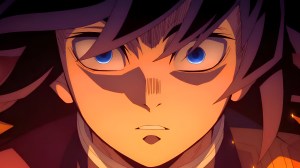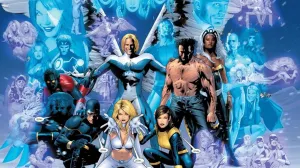
Earlier this week, CW Seed introduced the superheroine Vixen to their popular “Arrow-verse” with the first episode in a series of animated shorts. While Vixen has fought crime in the DC Universe for nearly 35 years, many casual superhero fans might be unfamiliar with the character due to her infrequent appearances over the years. For those wanting to learn more about Mari McCabe and her superhero adventures, here’s a rundown of some of her more notable, and best, comic appearances:
Videos by ComicBook.com
Canceled Comics Cavalcade
If you want to track down Vixen’s “first” appearance, you may have to shell out more than a few dollars. In the late 1970s, DC commissioned Gerry Conway and Bob Oskner to create Vixen, whom the company wanted as their first black superheroine with an ongoing series. Unfortunately, DC scrapped the planned Vixen solo title as part of a massive scaling back of their superhero books due to poor sales. But by then, Conway and Oskner had already turned in an entire issue of work. To protect their copyrights, DC collected the unpublished work in Canceled Comics Cavalcade, a two issue comic series. DC only printed enough copies of Canceled Comics Cavalcade to pass out to creators, select staffers and the US Copyright Office. The comic became a rare collector’s item, with individual issues selling for as high as $3,500.
While Vixen wouldn’t get her own series until 2008, Conway introduced the heroine a few years later in his Action Comics run, teaming her up with Superman in several international adventures.
Justice League Detroit
Vixen’s first stint on the Justice League came during the largely unpopular “Detroit” era of Justice League of America in the 1980s. Conway added Vixen and several other un-established heroes like Vibe and Gypsy, in an attempt to mimic best-selling titles like Teen Titans and X-Men, both of which featured young, multiethnic casts. Conway used the Justice League Detroit era to flesh out Vixen’s back story and give the heroine a fierce and fiery personality that matched her animalistic powers.
The Detroit era’s best Vixen story came during the team’s final adventure, in which Commander Steel and Vibe are killed by several of Professor Ivo’s androids. With the team in shambles, Vixen tracked down Ivo on her own and single-handidly fought several androids until Martian Manhunter intervened. Although Martian Manhunter hesitated before finishing the villain off, Vixen decapitated Ivo with a single blow, inadvertently revealing that their attacker was just another android. Realizing what she had almost done, Vixen quit the Justice League and left Martian Manhunter as its sole member.
Suicide Squad
Vixen next appeared in John Ostrander’s popular Suicide Squad series. Vixen gets entangled with the government-led team of villains after a druglord killed several of her friends. Vixen joined the Suicide Squad to take the druglord down, but her savage side emerged once again when she murdered the druglord who killed her friends. Faced with more blood on her hands, Vixen realized her animalistic personality was taking over, and joined the Suicide Squad permanently to help regain control of her powers. Vixen’s time in the Suicide Squad only hardened the heroine, as she saw several more of her teammates die in action. But, she did meet her first (and only) real love interest, the conflicted antihero Bronze Tiger.
Return to the Justice League
After leaving the Suicide Squad, Vixen sporadically appeared in various DC Comics, usually in one-off guest spots. Her next notable appearance came in DC’s revamped Justice League of America series, written by Identity Crisis scribe Brad Meltzer. Not only did Justice League of America “reintroduce” Vixen to the DC Universe, it also gave her a major plotline for the first time in years. During the series, Vixen’s powers changed after an attack by the supervillain Amazo, making her mimic the abilities of fellow superheroes rather than animals. Meltzer’s successor, Dwayne McDuffie, followed up on Vixen’s power change by revealing it was a test from the African god Anansi, who was seeking an agent on Earth to stop a mysterious force from altering reality. Unfortunately, McDuffie never followed up on Vixen and Anansi’s storyline, and Vixen left the Justice League after Blackest Night.
Vixen: Return of the Lion
Vixen’s only solo series to date is Vixen: Return of the Lion, written by Ms. Marvel creator G. Willow Wilson and illustrated by CAFU. Set in Africa, the five issue miniseries focused on Vixen’s return to her home village and discovery of her family’s connection to the Tantu Totem. While Gerry Conway established Vixen’s history in Justice League of America, Return of the Lion tweaked it for the modern era while giving Vixen some much needed characterization and depth. Return of the Lion doesn’t impact the greater DC Universe in any significant way, but it’s still an important story in that it gave Vixen the spotlight she lost all the way back in 1978. If you only read one Vixen story, make sure that it’s Return of the Lion.
———–
New installments of Vixen debut Tuesdays on The CW Seed.













